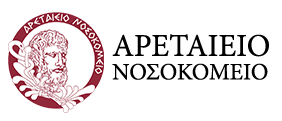Treatments – Anus
Faecal incontinence treatments
Surgery is rarely required for the treatment of faecal incontinence but it may be an option if all other non-surgical options have been exhausted with no improvement in your symptoms. Surgical options in the management of faecal incontinence include repair of a potential defect in the back passage muscle (sphincter) called sphincteroplasty, anal sphincter augmentation which is an injection of a prosthetic material into the internal sphincter in people with passive incontinence, rectal prolapse repair and haemorrhoid treatment. The most appropriate option will be discussed at the clinic with you at an individualised basis.
Anal sphincteroplasty
Anal sphincteroplasty involves the repair of a damaged anal sphincter and is used in patients with moderate to severe symptoms of anal incontinence. The injured area of muscle is usually due to childbirth and is identified with the endoanal ultrasound. The degree of damage determines whether anal sphincteroplasty is a potential treatment option. Sphincteroplasty takes place under general anesthesia. It involves making a cut between the vagina and the rectum and the edges of the damaged anal sphincter are released, brought back together and stitched together. The aim is to strengthen the muscle and tighten the sphincter to improve continence. In very serious cases where an extensive repair takes place a temporary stoma may be created to divert stool away from the wound until healing has taken place.
Benefits of the procedure
Sphincteroplasty improves symptoms of faecal incontinence in 1 out of 2 patients in the long term. The relevant risks of this procedure are lower compared to other procedures such as dynamic gracilopasty and artificial sphincter placement.
Before the procedure
Prior to the procedure you will need to take some strong laxatives to clean your bowel 24 hours prior to your procedure. These may make you feel slightly sick but they are needed in order to ensure that the bowel is clean.
Recovery
After the procedure you will wake up in a hospital room. After sphincteroplasty patients need to spend one or two nights in hospital. You are typically expected to go home once you are eating and drinking, are able to manage the pain and walk unaided and have passed some urine. It normally takes about 6-8 weeks to fully recover from a sphincteroplasty and return back to work but it varies from person to person and depends on their general health and the nature of their work. You should avoid any heavy object lifting, strenuous exercise, straining on the toilet or sexual intercourse for at least 6 weeks to reduce the risk of damaging the repair and allowing the wounds to heal. You will be provided with pain killers and laxatives to keep your motions soft during this period. Pelvic floor exercises are of paramount importance during this period.
Risks of the operation
A sphincteroplasty is generally a safe procedure. Complications with this procedure which are common to all surgical procedures include infection, bleeding, blood clots, heart problems, pneumonia, urinary retention and anaesthetic risks. Complications in relation to this type of surgery include the risk of the wound braking down, persistent wound infection and return of symptoms.
Anal sphincter augmentation
This procedure is used in patients with mild symptoms of passive faecal incontinence when other measures have failed. It has better results if there is a defect in the internal anal sphincter. The procedure takes place under a general anaesthetic. A synthetic bulking agent is injected into the internal sphincter at 4 different places to bulk it up or to close any defects.
Benefits of the procedure
Anal sphincter augmentation is a very low risk procedure that can benefit at least 1 in 2 patients for at least 12 months and can be repeated a number of times as required.
Before the procedure
Prior to the procedure you do not need to take any bowel preparation.
Recovery
After the procedure you will wake up in a hospital room. Anal sphincter bulking is normally performed as a day procedure. You are typically expected to go home once you are eating and drinking, are able to manage the pain and walk unaided and have passed some urine. You can return back to normal activities nearly immediately. You will be given some pain killers and antibiotics to take with you at home.
Risks of the operation
Anal sphincter augmentation is generally a safe procedure. Complications with this procedure which are common to all surgical procedures include infection, bleeding, blood clots, heart problems, pneumonia, urinary retention and anaesthetic risks. Complications in relation to this type of surgery include the risk of pain and leaking of the bulking agent.
Need to contact us or book an appointment?
Disclaimer
The information relating to general and colorectal disorders and their treatments given on this website is not complete and is not intended as a substitute for a consultation with your doctor. Always seek medical advice from your doctor before making a decision about any of the conditions and/or treatments mentioned on this website.
© Dr Georgios Markides
Contact Information
You can always contact our Clinic for booking appointments and other useful information:
Dr. Georgios Markides,
Consultant General & Colorectal Surgeon
Aretaeio Hospital, 55-57 Andreas Avraamides Str., 2024 Strovolos, Nicosia, Cyprus
+357-22-020728
Hospital: +357-22-200300
Fax: +357-22-512372
How to find us

